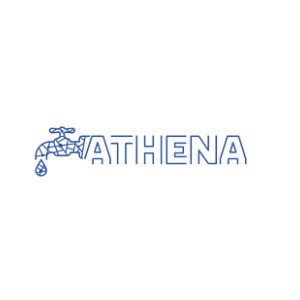 \
&
Contact us
\
&
Contact us
 \
&
Contact us
\
&
Contact us
The proposal should provide mainly two types of activities. Firstly, regular calls for proposals resulting in collaborative research and innovation activities. These activities should result in a faster time to market, de-risking investment, supporting business growth, contributing to EU and global priorities and supporting access to markets and knowledge. Secondly, through coordination and support activities, the creation of synergies between and synchronisation of national programmes, and a better cooperation and knowledge exchange between national intermediaries.
While collaborative research and innovation activities for internationalisation of innovative SMEs exist to some extent at Member State and EU level the alignment of national programmes and more effective and efficient processes of intermediaries and funding bodies are not addressed in instruments and programmes other than the Eurostars 1 and 2 programmes, supported under previous framework programmes. The initiative should draw on the experiences, and build on the successes, of those predecessor programmes.
There is a clear added value and ‘selling point’ for the initiative to further address gaps towards a better alignment and increased focus on internationalisation. This reflects the definition of European Partnerships in the Horizon Europe regulation[[Definition as per Article 2(47) of the Horizon Europe Regulation.]] as initiatives where the union and its partners ‘commit to jointly support the development and implementation of a programme of research and innovation activities, including those related to market, regulatory or policy uptake.’
The below list of specific activities, going beyond research and innovation activities, can therefore be implemented under the partnership and are anticipated as expected outputs:
The proposed initiative will help innovative SMEs to increase their research and innovation capacities and productivity and to become embedded in global value chains and new markets. It will achieve this by supporting innovative SMEs in developing products, processes and services through funding market-led, cross-border, research and innovation collaborative projects and providing accompanying measures. The initiative addresses collaboration in Europe and beyond, and the commercialisation of new knowledge. Thereby it will strengthen the overall resilience of the European innovation ecosystem.
The overall objective of the initiative is to implement a Co-funded European Partnership for Innovative SMEs to stimulate economic growth and job creation by enhancing the competitiveness of innovative SMEs while contributing to deliver a positive economic, societal and environmental impact in Europe and beyond.
In order to address that objective, the initiative should:
Type and range of activities
A main activity would be to run calls for proposals, organise the evaluation process and enable collaborative cross-border research and innovation projects. Beyond providing funding to innovative SMEs for cross-border R&I collaboration, they should include further promotion of the programme in underrepresented Member States, including but not limited to, through dissemination events, mutual learning seminars or roadshows.
The initiative should exploit synergies with cohesion policy funds and significantly support the widening aspect. In any case, links with regional smart specialisation strategies should be a priority.
Accompanying measures such as Innowwide should be included in the proposal.
Expected partner composition and geographical coverage
The private sector and research actors would need to be mainly drawn from the activities of the national and/or regional funding organisations. The effort, networks and judgements of these organisations are key to initiate cross-border research collaborations, to help prepare applications and to fund successful participants. The success of the initiative depends largely on these organisations.
A dedicated implementation structure may notably support them through various activities and services such as to organise calls, manage funding, monitor payments and projects and implement dissemination events, roadshows, matchmaking events, webinars etc.
The initiative should have an extended geographical coverage beyond Member States and Associated Countries, and the potential to evolve towards a global programme under Horizon Europe, including through possible involvement of additional partners during the lifetime of the programme. Third countries are welcome to participate in the Partnership. The initiative should promote the ambition towards more projects involving other partners than those in geographical proximity and the sufficient utilisation of the potential of the extended Eureka network.
Types and levels of contributions from partners
Proposals should mobilise the necessary financial resources from participating national (or regional) research programmes with a view to implementing joints call for transnational proposals resulting in grants to third parties.
Member States are invited to maximise the financial support provided to innovative SMEs through increased national funding during the selection process.
International dimension
Proposals should focus on supporting international, projects led by innovative SMEs. They should enable international cooperation, enabling small businesses to learn, combine and share expertise and benefit from working beyond national borders.
In line with the ambitions of the partnership to foster international collaboration and the provisions of the model grant agreement, projects involving one legal entity established in a Member State or Associated Country as beneficiary and one legal entity established in a non-associated third country as partner may be supported in the same manner as under Eurostars 2. A substantial majority of the projects supported must involve at least two beneficiaries from Member States or Associated Countries.
Synergies
Focussing on helping innovative SMEs to grow and successfully embed in international markets and value chains by developing methodologies and technologies, the partnership is expected to collaborate closely with other relevant European Partnerships, missions and the European Innovation Council in order to ensure coherence and complementarity of activities. Proposals must describe the methodology for their collaboration and the aims the project wants to achieve with this kind of collaboration.
Proposals should include only their commitments for the grant covered by the present work programme.
The Commission envisages to include new actions in its work programmes 2023-2024 and 2025-2027 to award a grant to identified beneficiaries with the aim of continuing to provide support to the partnership for the duration of Horizon Europe.
Partnerships group the EC and private and/or public partners, to coordinate and streamline the research & innovation initiatives and funding in some selected key domains.

magali.parent@vlaio.be

The ATHENA project addresses emerging risks for the water sector in operational technology created by digitalisation. The project responds to Digital Europe call DIGITAL-ECCC-2022-CYBER-03-UPTAKE-CYBERSOLUTIONS – Uptake op Innovative Cybersecurity Solutions. The project started in September 2023 and will run until November 2026. De Vlaamse Waterweg - The Flemish Waterway participates in the project to enhance the resilience of the organisation by co-developing targeted training modules for operational technology environments.